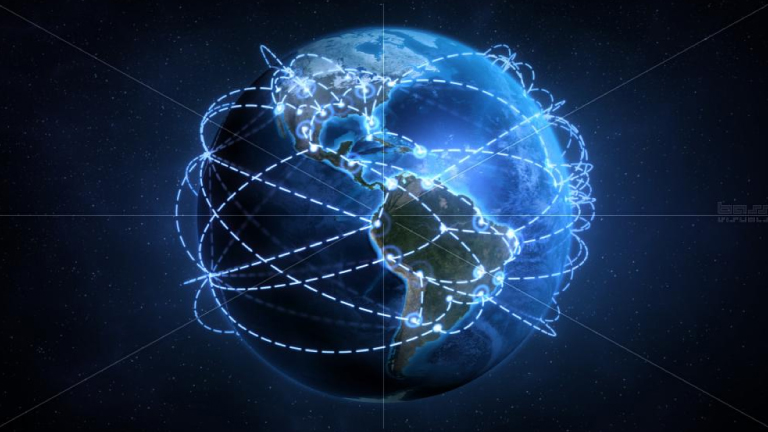In the midst of a pandemic crisis due to the new coronavirus, innovation can be a key ally to achieve better results, both to reduce its spread and to mitigate and reduce its impacts
With a mobile penetration close to 100% and a smartphone penetration of 45%, Latin America and the Caribbean (LAC) has a powerful weapon to combat this pandemic that is causing changes that are likely to become structural in our socioeconomic reality. Indeed, the connectivity and access to technology that we have today, added to public-private coordination, can become our “SWAT Team” to prevent and mitigate COVID-19, and help to recover the economic and social development of our region.
Coronavirus and technology in Korea
The experience of countries like Korea in treating this health emergency shows that through technological solutions such as the one we will describe below, it is possible to flatten the growth curve of the number of people affected by the coronavirus. This result is based on two fundamental pillars: the identification of the affected people and the separation of these (social distancing) in the same way that oil molecules separate from water molecules.
In a first stage, it is essential to identify and control the people who enter the country from other affected destinations or to locate those people who are currently located in geographic areas within a country that are already affected by the virus. To achieve this, public-private coordination between governments and technology companies is necessary, which allows, based on agile solutions such as mobile applications, for citizens to carry out (as part of the measures defined by the authorities) a health self-assessment through simple questions, similar to that presented in the following figure, and as implemented by Korea at the time it reached 1,000 cases.
Through this application, citizens had to identify themselves and answer basic questions such as: Have you had a fever higher than 37.5º C?
Do you have a cough?
Do you feel like you are having trouble breathing?
With these and other questions, added to continuous monitoring throughout the duration of the quarantine, the authorities were able to collect fundamental information on the number of new cases, and with this limit and delimit the people in the environment. And more importantly, locate these cases.
Information and mitigation with technology in Latin America and the Caribbean
Although in the case of Korea this application was implemented in the migratory accesses to the country, it is something that could be done immediately in LAC countries, taking information from citizens and responding to them when the symptoms derived from the self-assessment will be positive on two consecutive days. The introduction of this measure as part of the actions of governments in the region would mean, on the one hand, reducing the number of unnecessary visits to hospitals while limiting the problem geographically to define specific actions aimed at mitigation.
The good news is that some countries in the region are rapidly learning from these experiences. For example, on March 20, the Uruguayan government launched such an application and carried out a strong communication campaign to promote its dissemination and use. This solution would mean, in addition to installing the application as a mandatory measure throughout the 14 days of quarantine, having a big data and analysis team in the Government, which will monitor statistics and calls to citizens who have symptoms as part of the self-assessment exercise. But technology, in addition to supporting the prevention phase, could also be an important ally in the mitigation phase, as one of the great challenges is for people to be consistent in the coming weeks in their actions of social distancing.
Since the cell phones are connected to mobile antennas that allow the exact location of people to be identified by triangulation, these devices could send alert messages to both potentially infected citizens to return to the situation of isolation under the implementation of specific fines or sanctions. Furthermore, when this occurs, mobile phone operators could send messages to both 911 emergency services and security forces to ensure isolation and non-contagion to others. It is important to bear in mind that these emergency measures are implemented within a legal context where citizens’ privacy rights are taken into consideration so that abuses by governments and companies do not occur.
The example presented demonstrates the potential of digital technologies, connectivity and data for socio-economic development and for crisis management. There is a whole battery of mobile applications and digital solutions in different parts of the world that support various areas of productive activity (agriculture, tourism, energy, logistics) and social (health, education, e-government) that, in addition to contributing to the reduction of The digital divide also contributes directly to the improvement of people’s quality of life.
As we can see, connectivity can be a fundamental tool not only in prevention and mitigation, but also in the exit phase of the crisis thanks to the use of critical infrastructure associated with strategic sectors such as energy, transport (ports, airports, etc.) , water and others, in order to enhance the productive fabric and regional integration.
Just as water is always separated from oil, the technology has enough malleability to prevent infection first thanks to the identification and location of people affected by the coronavirus, but also mitigate the risks of spread thanks to monitored monitoring of the insulation (social distancing) of infected people. We therefore have the opportunity in Latin America and the Caribbean to separate the oil and keep the water, life and development. And above all, mitigate the impacts of the crisis if we put technology to work using connectivity. There is no time to lose. Why not start now?


